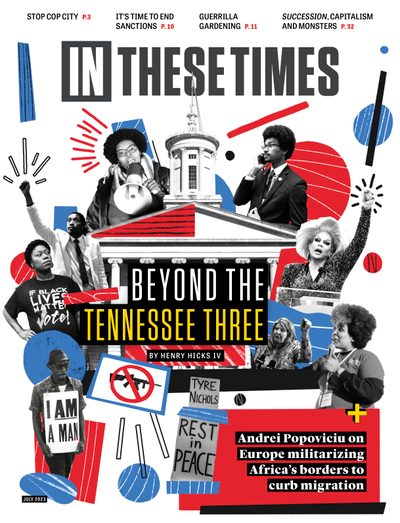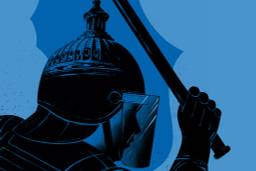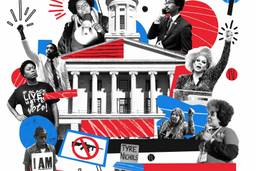Tennessee Organizers Are Taking the State Back From the Right. Here's How.
Social justice organizing has deep roots in the Volunteer State and, despite deep-seated opposition, the movement perseveres.
Henry Hicks IV

Lea este artículo en Español.
On April 12, 1864, Confederate General Nathan Bedford Forrest helped lead a brutal assault on Fort Pillow, a Union stronghold outside of Henning, Tenn. Forrest’s regiment was about 1,500 men strong while Fort Pillow was held by only 600, about half of whom were Black soldiers — including some formerly enslaved — who had joined the Union cause as part of the United States Colored Troops.
After engaging in battle, the heavily outnumbered Union soldiers eventually retreated down the hillside toward the Mississippi River and away from the fort’s ridges, but, according to John Cimprich, author of Fort Pillow, a Civil War Massacre, and Public Memory, among other sources, found themselves boxed in. Most of the Union soldiers surrendered, tossing their weapons to the dirt and begging for arrest as prisoners of war.
In what would be one of the deadliest anti-Black massacres in U.S. history, Forrest’s troops murdered nearly 300 of the unarmed, the majority of whom were Black Union soldiers, their blood seeping into the Tennessee soil.
Forrest, who would become the first Grand Wizard of the Ku Klux Klan in 1867 after its creation in Pulaski, Tenn., still looms large in the Volunteer State. There is a state park named after him, a state holiday honoring his legacy and, among many other monuments, there was (until recently) a large bronze sculpture of him in a Memphis park (previously called “Forrest Park”), just an hour’s drive south of where the Fort Pillow Massacre occurred. Overall, as of at least six years ago, there were more monuments to Forrest in Tennessee than to the three presidents (Andrew Jackson, James K. Polk and Andrew Johnson) that came from the state, combined.
In many ways, the most pernicious example is the nearly 3,000-pound bust bearing Forrest’s likeness that had been displayed boldly for more than four decades in the Tennessee State Capitol (in 2010 it was moved from directly outside the doors of the House to the main hall between the House and Senate chambers) until its removal two years ago.
It would be easy — though uninformed and lazy — to think of Tennessee only as a place where white supremacy and far-right conservatism run rampant, although the state has been in the national spotlight for these reasons a lot recently. State lawmakers passed the first-in-the-nation drag ban earlier this year, kicked two young Black legislators out of the House for protesting gun violence in April and tried, in recent years, to make the Bible the official state book. In January, in Memphis, police killed 29-year-old Tyre Nichols.
But Tennessee is also a complex state with a rich tradition of social justice organizing, where a deep legacy of resistance and movement building serves as a weighty counterbalance to the persistent attacks on civil liberties and human rights. The story of how that 3,000-pound bust of Forrest was removed from the Capitol, for example, says much more about what is happening in the state now than how it was first placed there. The organizing and activism that responded to Nichols’ death speak louder than the police killing itself, and how swiftly those two young Black legislators were reinstated blunts how swiftly they were removed. Some movement leaders say the efforts for racial, economic and social justice currently underway in Tennessee are so profoundly impactful that they could be part of a larger blueprint for change across the South.
“There have been [historic] beacons of light and of hope that radiate even into this present day,” says Rep. Justin J. Pearson (D-Memphis), one of the Tennessee Three, the Democratic state legislators who were attacked by Republican lawmakers for protesting gun violence on the House floor. “It is because of those [Tennesseans] who came before that I have infinite hope. … We will never quit. And if we never quit, we can never lose.”
Tennessee is, after all, the home of the 1968 Memphis sanitation workers’ strike, famous for its “I AM A MAN” slogan. Many prominent leaders and organizers in the civil rights movement trained in Tennessee, from the late Rep. John Lewis and Diane Nash (co-founder of the Student Nonviolent Coordinating Committee) attending non-violent direct action workshops put on by Rev. James M. Lawson, to Rosa Parks and Martin Luther King Jr. learning and training at the Highlander Research and Education Center, to name a few. Even further back, following the collapse of Reconstruction, a new class of activists determined to resist Jim Crow and the Black Codes had roots in the state, including Ida B. Wells-Barnett and W.E.B. Du Bois, among others.
While the nation’s spotlight was heavily on the Tennessee Three this spring, organizers are — and have been — engaging in a type of solidarity politics they say has always defined effective activism in the state. It’s a type of politics that eschews the notion of singular heroes, saviors or martyrs and instead relies on intentional, broad coalitions.
“The legacy of intergenerational, intersectional organizing, relationship-building and coalition-building in a really strategic way, that’s one thing that I think is a gift the South has to give, especially Tennessee,” says D. J. Hudson of the movement group Southerners on New Ground. Hudson lived in Nashville for 15 years and is now based in Georgia. “What it also created was a longevity. It also created trust that allowed us to take even more risks together. And it helped us when we were organizing, when we needed to get stronger, when we needed to get better, when we needed more people, we could call on that.”
Ash-Lee Woodard Henderson, co-executive director of the Highlander Research and Education Center in New Market, Tenn. notes how “Tennessee has been, in no small way … a tip of the spear of Southern organizing for a very long time — whether we’re talking about the labor movement, the long history of radical organizing that’s happened around environmentalism, conservationism, racial justice, the fight to end police brutality and misconduct, the fight for abolition of prisons and jails and detention centers, the fight for immigrant justice, you name it. So many of the frontlines of struggle converge here in our great state.”
Highlander was initially founded in 1932 and became a place that organized working people, rural people and Southerners. Today it remains a critical resource for developing movement leaders across issues and sectors.
“All of these things have been building toward this moment where this right-wing trifecta is really doing everything in their power to consolidate their wealth … and consolidate their power in the legislative, judicial and executive branches,” Henderson says. “They’re doing everything in their power because we have been building power across this state, across ideological differences, across sectoral differences, across all sorts of different identities.”
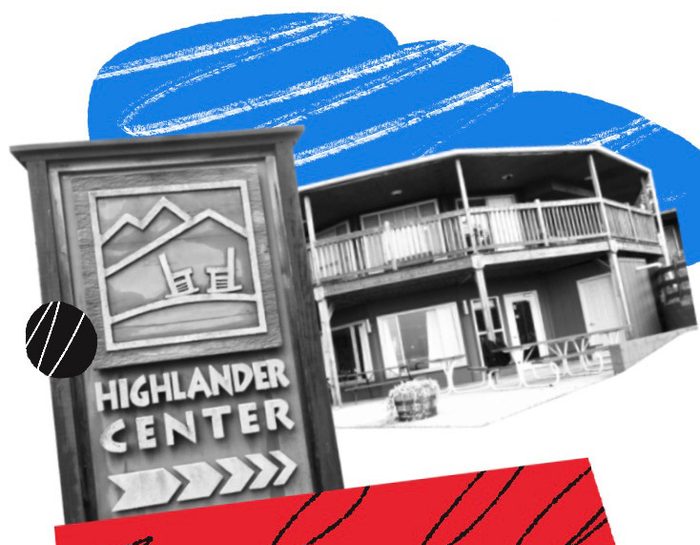
Many across the country have watched the strength that Tennessee organizers have displayed in responding to numerous issues, including the Tennessee Three expulsion vote, and see those efforts as part of the key to unlocking transformative change.
“From our lens at MVP, funding groups in 40-plus states,” says Billy Wimsatt, executive director of the Movement Voter Project (MVP), “Tennessee was already really high on our radar as having especially excellent groups that are especially collaborative and strategic. … The movement work in Tennessee is really extraordinary, and was so even before [the Tennessee Three] happened.”
Progressives aren’t the only ones looking to the state as a critical site of transformation. In leaked audio from a closed-door Tennessee House Republican Caucus meeting in April, Rep. Scott Cepicky (R-Culleoka) made clear that Tennessee’s social justice movements are gaining ground— and it’s apparently making Republicans nervous.
“The Left wants Tennessee so bad, because if they get us, the Southeast falls, and it’s game over for the Republic. … And the world is staring at us — are we gonna stand our ground?” Cepicky challenged.
Rev. Dr. William Barber II, co-chair of the Poor People’s Campaign, has been on the national forefront of intersectional movement building, including with his recurring Moral Mondays campaign initiated in North Carolina, just east of Tennessee. He’s paid close attention to his neighbor state’s situation — the electoral landscape, the shifting demography, the surging urgency of its people — and is optimistic about the groundswell and future of organizing in Tennessee.
“There are so many roots in Tennessee, and so much organizing that has been done,” Barber says. “Tennessee has the potential to build the kind of moral fusion politics that can overturn the power, and electoral power, of extremists. I don’t just say that as a matter of feeling. The numbers are there, and people like [the Tennessee Three, Reps.] Gloria [Johnson], and Justin Jones, and Justin Pearson and others know that. They know those numbers are there. But it’s going to be hard work.”
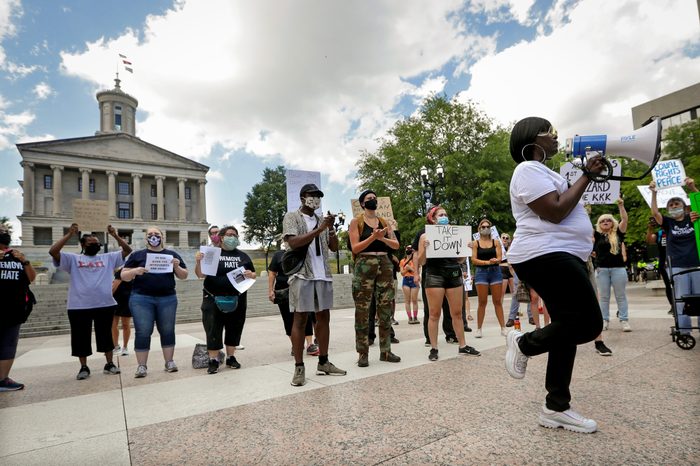
And it will be. The state’s Republican trifecta — the GOP holds the governor’s office and supermajorities in both chambers of the legislature (both U.S. senators and all but one of its members of the U.S. House of Representatives are also Republican) — has attacked democracy in recent years. In 2019, after a successful statewide effort a year earlier to register Black voters, state lawmakers attempted to restrict paid voter registration drives. The effort was passed and signed into law, though eventually blocked by a federal judge. More recently, this year, the legislature gutted community-led police oversight boards.
Meanwhile, 60% of state voters picked former President Donald Trump in the 2020 presidential election — although Tennessee ranks near the bottom of voter turnout in the United States, coming in 46th place in 2020, due, in no small measure, to a broad swath of voter suppressive policies: Tennessee requires voters provide an approved reason to obtain an absentee ballot and voters have to register at least 30 days before an election (as opposed to the many states that allow same-day registration). The state’s electoral politics have also been skewed by gerrymandering and preemption, a doctrine that allows state legislators to overrule local governing bodies across the state.
Tennessee’s voting-age population is estimated to be about 5.5 million, and more than 470,000 of those residents are barred from voting because of the state’s disenfranchisement laws, according to data updated this year in a report from The Sentencing Project. That includes one in five voting age Black Tennesseans who are prohibited from casting a ballot (“Tennessee has the country’s highest rate of disenfranchisement for both Black and Latinx Americans,” according to the report, and Florida is the only state that denies the vote to more people with a felony conviction). The North Nashville ZIP code of 37208, according to a 2018 Brookings Institution report, claims the nation’s highest incarceration rate, while what appears to be the nation’s largest private prison corporation is headquartered across town in South Nashville.
Organizers, activists and politicians interviewed for this article were clear-eyed about the challenges Tennesseans and many Southern communities face, but many said they also felt like they were gaining ground.
“Tennessee is a part of the blueprint, but we cannot view Tennessee as an anomaly,” Barber says. “Organizing in Tennessee, North Carolina, Alabama and Georgia can fuse and provide a multifaceted blueprint for change across the South.”
Barber says that he and the Moral Mondays movement were invited to come to Tennessee following the March 27 school shooting at the Covenant School in Nashville, and notes the intersectional and intergenerational organizers and activists who joined alongside him.
“We had over a couple of thousand people show up,” Barber says. “[There were] clergy and impacted people, students who joined us, mothers who had children [at Covenant] and when we gathered that day, what was interesting is they didn’t want to talk about the [Tennessee Three] in a vacuum. In fact, the three legislators don’t want to talk about what happened to them. They want to talk about why what happened to them has happened.
“The more the media tries to put the attention on them, the more they resist it and say, ‘No, this is not about us as individuals. This is about what we stood up for.’” (Rep. Justin Jones was even unavailable for an interview for this article.)
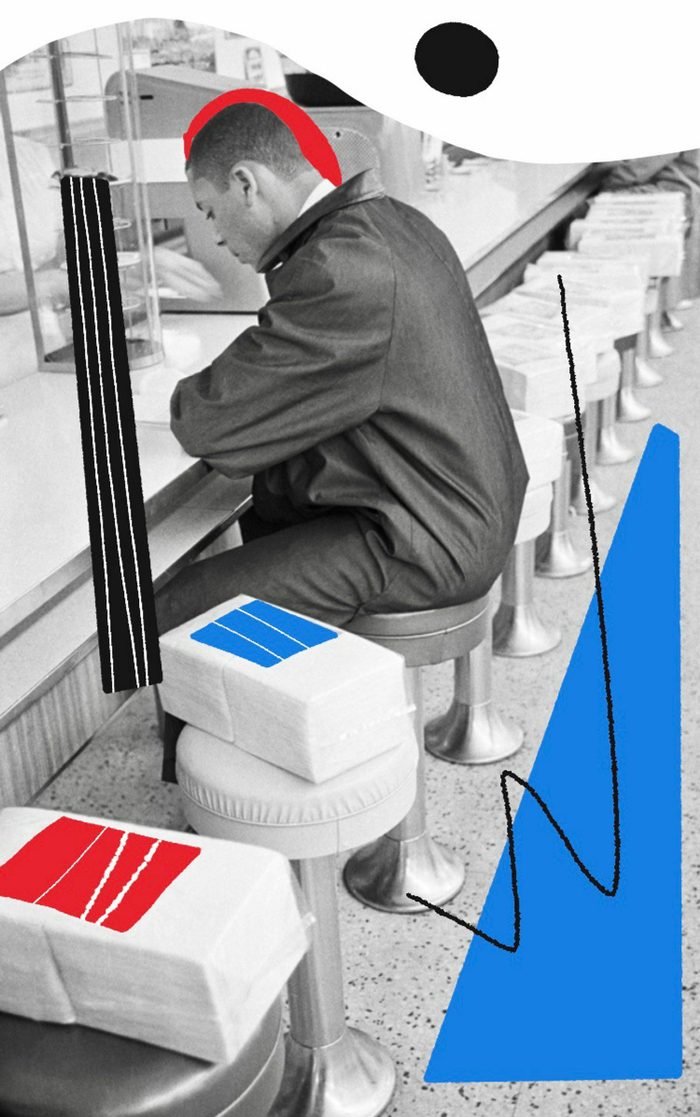
“I like to say that what you’re seeing in Tennessee is something similar to what the mothers in South Africa used to say, and the preachers used to say,” Barber adds. “They said a dying mule kicks the hardest. All of this trickery, all of this cultural war, all of this voter suppression are nothing but signs [the] political extremists are recognizing that slowly, but surely, [their] ability to hold onto power is lessening.”
THE PEOPLE’S PLAZA
One of the most important, recent organizing flashpoints in Tennessee came in the aftermath of George Floyd’s murder and surrounded that infamous 3,000-pound bust of Nathan Bedford Forrest in the Capitol.
“We used to do a chant on the Plaza,” says Rev. Venita Lewis, president of the Nashville chapter of the NAACP. “‘Bring us Nathan Bedford Forrest’s head. Even though we know he’s dead. We want his head. Bring him out! Bring him out! Bring him out!’”
Lewis was one of dozens of organizers who occupied Nashville’s Legislative Plaza outside of the Capitol starting June 12, 2020. The action, which would last 62 days, made three explicit demands to Republican Gov. Bill Lee: make cuts to municipal police departments throughout the state, demilitarize state troopers, and remove Confederate monuments from state property — namely, that 3,000-pound bust. Police arrested more than 200 protesters at the plaza in two months.
Rep. Justin Jones (D-Nashville) helped lead the effort and afterward penned a book documenting the occupation: The People’s Plaza: Sixty-Two Days of Nonviolent Resistance. It includes a foreword by Barber.
“Hundreds of thousands were taking to the streets all over America, and thousands had been mobilized in Nashville,” Jones writes. “But what would sustained action and pressure look like?”
There had been scattered resistance to the bust of Forrest since it was installed in 1978 (including a protest by Black residents the day it was unveiled), but organizers saw new possibility in this moment.
“The George Floyd protests became the nucleus, the power, the energy necessary,” says Lewis. She had been dubbed “Queen Mother” of the plaza by many of those participating in the occupation.
The People’s Plaza occupation is a significant marker in contemporary Tennessee organizing and served as a prelude for what would eventually come with the Tennessee Three. The rising tension between the legislature and organizers at their doorstep also included an escalation of the crackdown on dissent.
In recent years, Legislative Plaza, in Nashville, has been the home of numerous demonstrations — anti-war protests, actions for trans justice, Black Lives Matter rallies, abortion rights protests, among others. Only blocks away, at what was formerly a Woolworth’s lunch counter, protesters on Feb. 27, 1960, were among the nearly 100 arrested as part of massive action targeting downtown drugstores during the first wave of Nashville sit-ins during the civil rights movement.
In a state where coalition-building is tradition, Lewis says the People’s Plaza was the first time in her years as an organizer when unlikely allies, such as wealthy, white Tennesseans, joined organizers in the streets in a sustained way, committing to the larger fight for racial justice. The plaza space was transformed into a vibrant site with open mic nights, community meals and a drag ball.
“I witnessed parents from Franklin and from Brentwood — Caucasian — who would be there, or come down there, and encourage their children to stay,” Lewis recounts of the People’s Plaza occupation. “If they got arrested, [the parents] would ensure that they got [bail].” Community members would, in solidarity, attend recurring honk-a-thon rallies and deliver supplies after police raids.
The People’s Plaza, in some ways, also primed white, higher-income Tennesseans to join in the broader resistance work that was happening in the state and which would be necessarily activated following the expulsions of Jones and Pearson. For those who joined in, it was an immersion course in solidarity.
About a month later, on July 9, a commission convened by the governor voted in favor of removing the infamous bust. Soon after, the state legislature made camping overnight on state property, including outside the Capitol, a felony. Still, activists and organizers had made real gains.
A year later, Forrest’s bust would be hauled from its pedestal, loaded onto a truck and unceremoniously relocated to the Tennessee State Museum.
“Out of all of the protests that I’ve been in — I’m 66 now— to me,” Lewis says, “the People’s Plaza protest … was the beginning of a new era.”
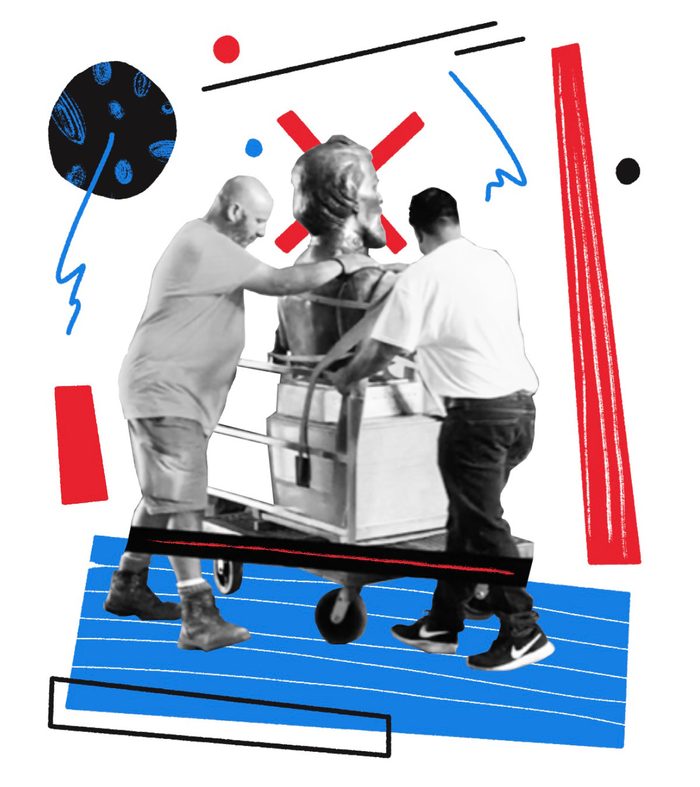
TYRE NICHOLS AND THE COVENANT MASSACRE
On January 7, Memphis police pulled over Tyre Nichols on a quiet road two minutes away from his home. Nichols, unarmed, fled after being dragged out of his car and assaulted by officers, at least one of whom had their gun drawn. He was pursued and cornered by five officers, and then the beating began. Nichols faced unrelenting pepper spray, batons, punches and kicks, all while he begged for mercy. He died three days later from the injuries.
“The Tyre Nichols murder,” says Pearson, “[which was caused] by police brutality and by a system built on white supremacy and anti-Blackness, catalyzed the conversation in Memphis about what is in our power to do about transformation and change.”
Nichols’ death would garner mass protests across the state — and nation — that added to a growing foundation of resistance in Tennessee.
“The energy I felt, and a lot of people felt, was a lot of momentum,” says Amber Sherman, who is the rapid response coordinator for the In Our Names Network and member of the Official Black Lives Matter Memphis Chapter. “People really felt like now was the time to really press the issue.”
Sherman adds that the national outrage surrounding the Nichols killing was felt locally and had the effect of bringing out some community members who previously would have been unlikely to join grassroots movements against racialized state violence. “I definitely think it marked a new type of organizing,” she says. “There were people who were in the community … they had never shown up to a protest or a city council meeting… More younger people, but also a lot more older folks who usually tend to be more conservative and don’t really push back against policing as much. … I saw a lot more older folks who were like, ‘Actually, no, we don’t need policing in this way.
Nichols’ death served as a flashpoint across the state but especially in Memphis. The city is 65% Black — notable in a state with an overall Black population of 17% — and the issue of gun and police violence has been exacerbated in the city. The police shootings of Darrius Stewart and Martavious Banks marked previous rallying points for community members.
Following the police killing of Nichols, Sherman says a broader coalition of people were brought into movement work through a week of action, which included teach-ins on the intersection of racial and economic justice and trainings on giving public comment at City Council meetings. She also says movement elders were helpful in meeting and advising younger activists.
“Regular people who live here, who live in the hood, who are saying, ‘No, we actually don’t want policing. We don’t want pretextual stops. … We don’t want [police] in unmarked cars. We don’t want plainclothes officers in our communities,’” Sherman says. “We pushed for a lot of things — like overall police transformation — just because of the energy in the moment.”
One of a few things organizers were successful in helping push through was the Driver Equality Act, an ordinance that eliminated pretextual stops (minor reasons that, by themselves, would allow police to pull a driver over, like a broken tail light), though the impact was also broader than individual reforms.
“That type of activism is not just to elevate the issue and inform people and educate people and activate people and agitate those in power,” Pearson says, “but [to] truly change things.”
Tikeila Rucker, the political director for the coalition-building organization Memphis for All, says that after Nichols, “the community’s passion and resilience are now more evident than ever, as they stand united and ready to challenge the status quo, demanding justice and meaningful changes to prevent such tragedies from happening in the future.
“By joining forces, we enhance our ability to advocate for the necessary reforms and amplify the concerns and demands of the people,” she says.
The Covenant School shooting in Nashville, in which six people were shot and killed (including three 9-year-olds) occurred on March 27, exactly two months after the January 27 release of the video footage of Nichols’ beating. The two tragedies might seem unrelated, but State Sen. London Lamar (D-Memphis) says they’re linked in an important way.
“Whether you’re talking about police brutality or lax gun laws,” Lamar writes in a statement, “Tennesseans have awakened to the idea that violence against our people is a policy choice the controlling party keeps making.”
In the days following the shooting, a broad movement would coalesce.
“Preventable tragedies, like we’ve experienced recently in our state, raise the stakes,” Lamar writes. “We’re sick and tired of living in fear and it is time the legislature takes action to solve these problems instead of making things worse.”
Tennessee is often referred to as being three different states in one, and the state’s coming together at this moment was distinctive. It’s perhaps best represented by the Tennessee Three’s regional diversity: Pearson hails from the west, Jones from the middle and Rep. Gloria Johnson (D-Knoxville) from the east.
“There were pockets where groups were organizing across the state, but I think that we are seeing a lot more of that now,” says Johnson. “A whole lot more, and I think that’s great.”
Bianca Cunningham, of the Bargaining for the Common Good Network, agrees: “There hadn’t been, previously, a lot of … sustained collaboration [among regions].” Cunningham helped launch Tennessee for All, which describes itself as a statewide coalition of faith, labor, and community organizations. She notes that statewide organizing can be tricky, saying it’s “hard because that’s cultural work, right? That’s cultural differences, different interests, different geographies and demographics and makeups. But it’s been so important.”
On its website, Tennessee for All offers a strong push for an intersectional, statewide movement: “Whether we’re from Memphis or Johnson City, we all want a good life for ourselves and our families. But far too many Tennesseans are struggling while greedy corporations are making record profits. Instead of taking action to help Tennessee families, politicians are pointing fingers and pitting communities against each other. We know that when we come together, across our differences, we can make Tennessee a place that works for everyone.”
Henderson, from the Highlander Center, says the aftermath of the Covenant shooting “engaged a lot of folks, particularly folks with privilege in the state of Tennessee, who maybe wouldn’t have gotten down on issues of racial justice or economic justice, who had the privilege to be able to not always get involved in those sorts of things, but who were grieving because of the Covenant shooting, and who got activated.”
Following the shooting, there were demonstrations at the Capitol, with protesters lining the hallways and chanting. Some made their way to the Senate gallery and were removed after reportedly yelling “Children are dead!” at lawmakers. There were school walkouts. Some of those in Green Hills, the middle to upper-middle class neighborhood home to the Covenant School, would tie ribbons to their mailboxes to signify solidarity in the fight. The Nashville shooting unified young students, activists resisting the state’s drag ban, racial justice organizers, veterans of the civil rights movement, teachers, activist-politicians and others.
The Tennessee Three may have been labeled by newsmakers as leaders of the efforts, but several organizers say it was genuine coalition-building that really led the way.
“There’s a real rising up of the types of coalitions that we need in order to create change,” Pearson says. “That is going to be the multi-racial, multi-ethnic, multi-socioeconomic movement that ultimately will transform our state.”
IS IT A REVOLUTION?
Following their expulsions, the Metropolitan Council of Nashville and Davidson County and the Shelby County Board of Commissioners (Memphis is the county seat) voted unanimously to reinstate Jones and Pearson, respectively. Both were sworn in amidst crowds of continuing demonstrations outside of the Capitol. Organizers and activists from movements and groups across the state convened in Nashville for the ceremonies and associated rallies.
While the reinstatements were a significant victory for the movement’s resistance against the stifling of dissent, of the nearly 20 organizers, activists, politicians and academics interviewed for this article, many urge reminders that the movement is too large for individual martyrdom.
“We don’t have any saviors coming to save us from what is happening in our state,” says Vonda McDaniel, president of the Central Labor Council of Nashville and Middle Tennessee. “Stacey Abrams kind of emerged as the face of what happened in Georgia, but I know lots of community coalitions on the ground that have been doing the work for 15 to 20 years that really were responsible for that ‘Stacey Abrams moment.’
“The same is true in Tennessee,” she says.
Cunningham adds: “We won’t have a ‘Stacey Abrams moment,’ but we will have a moment of the masses rising up.”
Other state organizers and leaders agree.
“Reaching out and building strength and building power and building a movement across the state is really what’s going to lift us all up,” Johnson says.
Kathy Sinback, executive director of the ACLU of Tennessee, says the state is on the precipice of “a peaceful revolution.” It’s “a revolution where you are going to see people claiming power for the first time — claiming a voice for the first time — for the first time in the entire history of a state with a very, very horrific history of a racial atrocities.”
Several organizers, activists and politicians say the energy sparked by the Nichols protests and the response to the Covenant shooting endures.
“That energy is not going away,” says State Sen. Charlane Oliver (D-Nashville). “We’re going to continue to harness that energy, all the way through the summer, through the August 21 special session and into the 2024 midterms. People do not forget, and if they do, we’re going to remind them.”
Johnson firmly believes “[the Tennessee Three] moment has become a movement,” and the coalitions formed surrounding the expulsions will be a large part of the social and racial justice work moving forward.
“When we spoke at the Plaza … for the Tennessee Three, the sea of people looked so similar to the George Floyd protests” and was more than Black Tennesseans, remembers Lewis of the NAACP.
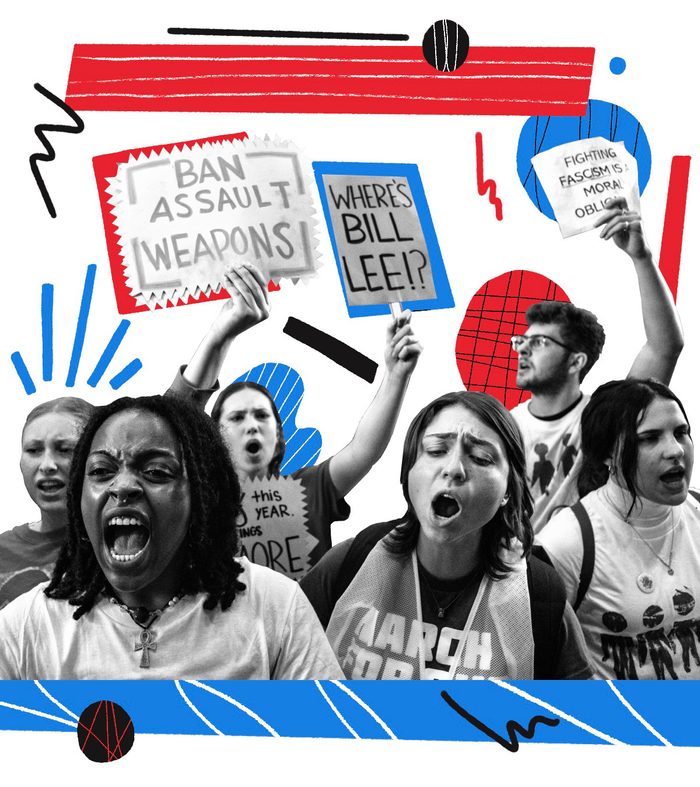
These emerging coalitions go beyond regional distances and have allowed for deepened collaboration, offering bridges for urban, suburban and rural organizers to move in unison.
“It’s become an absolute necessity, particularly in the state of Tennessee, to build across the sort of manmade and sometimes fabricated urban-rural divide,” Henderson says. “Because of faith communities, labor, racial justice efforts, community base-building and capacity-building organizations, there’s real potential for real statewide work that is not only led by urban folks, but also really developed and strategically introduced by rural folks.”
Cunningham notes that a vast majority of the 95 counties in Tennessee are rural, and there is sometimes an assumption that people in rural counties are not movement-aligned. Those communities, she says, are key to the state’s future: “If we want to win any major, impactful change in the state, or change the political landscape, it’s going to come from those areas that have been overlooked.”
Cunningham also says that organizing in the South, where resources are often scarce, actually creates ripe conditions for coalition-building. “[Because] Tennessee has been so underinvested in, in past years, they already had this ecosystem of organizations that were reliant on one another because they had to share resources,” she says.
Almost all of the organizers, activists and politicians interviewed for this article said there is much reason for optimism because of the persistent movement rooted here.
“The movement is only going to continue to grow,” Johnson says. “Our fighters are a lot tougher, because it’s a lot harder here.”
Cunningham agrees: “Everybody’s like, ‘Tennessee is a fascist state. Oh my gosh, look what’s happening in their legislature.’ Well, we’ll be ground zero and the testing ground for what’s going to happen in everyone else’s legislature. White supremacy is everywhere in this country, and so you ought to learn from the folks down in Tennessee about how to fight back.”
Henry Hicks IV is a Washington D.C.-based writer and organizer. Originally from Nashville, Tenn., he is a graduate of Oberlin College and is a Harry S. Truman scholar.
